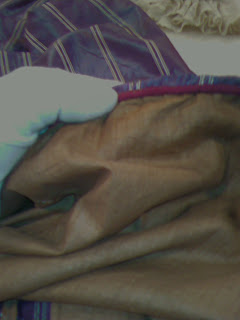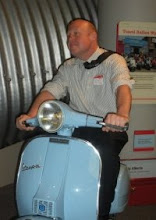CGP Teaching Collections
Sample 1
How long can you stare at two pieces of fabric? So far these two samples have taken me about 30
sem to be woven wool like we have seen in the collections and on the loom in the Farmers Museum
The top is plain weave or tabby of wool. I think it is undyed but it is very bright white.
The second pattern seems to be woven of wool as well but with a herringbone pattern. The fabric is an outlined checker board with indigo dyed ( or perhaps this is just made to look like it) border.
The fabric looks like it has more than one layer so I am going with a double layer construction but I also found a similar looking coverlet that described itself as the traditional tabby pattern.
Looking closely at both these samples I was thinking I would see a cotton wool combo but both weft and weave look like they are made of wool.
Thistle Hill
Historic Jean in Cotton and Wool
Wow I wish all items came with this information. While we are familiar with Anerica's Levi's
but the Thistle Hill Samples are a little more lively. I looked at a dark brown fabric with the 24/2 cottom warp that looks as if it runs at a diagonal to the fabric. It has a brown weft and may be an example of the classic Duck
or maybe it is just a simple brown.
The warp is cotton and the weft is dyed brown.
My Scarf

A Selection of wool and wool synthetic blends including my Cosby Sweater
I have never really owned a scarf. Being from Pensacola Fl. there was simply very little call for any kind of neck muffler. I got it at Target so before I pulled out my
It is knit in loops and seems to be primarily Wool but also a synthetic. The grey portion of the sweater is wool I think but the brightly colored stripes are probably Nylon as most knitting or crochet is done with this type of thread.
There are two patterns that are on this scarf. At the end there seems to be thick ribs, Looks like a three knit one pearl pattern.Moving upwards into the first red horizontal stripe it goes to a knit pearl pattern . You can tell because the lines that look like vertical stripes are actually the little loops forming the rib are the knit and the horizontal looking lines are the pearl.
So I got my wife to more or less walk me through the whole knit pearl thing. And then I went digging through her closet to find something where I could see it all much better. I found a pink sweater that was 80% acrylic and 20% wool. So I looked at the fibers first. And they all look like wool. Acrylic can be made with the look of wool but it clearly tighter than and not as fuzzy as the real wool. I pulled out what I like to call my Cosby sweater to do a comparison and the Cosby fibers are much more wooly.
So the big revelation for me was that when you pearl on one side you knit on the other and what you choose to do will create the pattern. You can clearly make it out as most of her sweater is straight knit (vertical lines made of loops) and you flip it to find the horizontal pearl loops. It is so refreshing when I actually get it!
Sows Ear or Silk Purse? Satin weave "Silk" bought in China
I found a skirt of my wife’s that was almost 90% silk with just a bit of spandex. Looking at these two under the loop the red Satin “silk” looks like it is warp face, regular with an end every 8 spaces or lengths. The silk/spandex looks like a knit pattern to me.
My wife's silk and Spandex. My 100% Silk tie.
I pulled out my one 100% silk tie and it looks very much like a knit because I can see ribbing and almost the weave of the peal in-between but on closer inspection I believe the tie is woven. In a traditional tabby because the weave is just SO tight.














